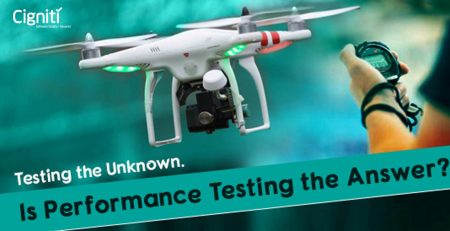Testing IoT for Performance
Over the last few years, the Internet of Things [IoT] has spread its coverage area and become inclusive covering even everyday objects and appliances in its sphere. Software testers, however, can only cope with the swiftly changing IoT environment by training on the fly. To a performance tester, the IoT might seem daunting, but it is similar to testing web/mobile applications. IoT devices are those that that are constantly connected to a server. Therefore, the overall usage pattern is quite different from that of mobile devices, and performance testing the IoT essentially boils down to thoroughly testing the internal computation between devices and the network infrastructure.
IoT introduces a host of new challenges for performance testers to tackle.
Performance Testing the IoT: Challenges
- The biggest challenge that testers are bound to face is greater complexity. All the new devices involved in the network need to be accounted for (smartphones, refrigerators, ACs, etc.) Consequently, determining a method of recording messages between the various connected objects throws up another challenge. A performance and load tester may be familiar with recording traffic from web browsers, mobile devices, etc., but testing new objects that do not allow a change of settings might prove inconvenient.
- Similar to testing web/mobile applications, testers must account for factors such as latency, packet loss, network bandwidth, load, etc. The effect of such factors in the IoT can be far more serious. Simply put, instead of a web site/mobile app crash, a device such as a car might fail to respond to a command, resulting in serious consequences.
- Diverse usage conditions become another obstacle altogether. While assessing the performance of an app, the stability of the end user’s internet connection plays a significant role in determining test results. Therefore, it’s necessary to ensure that data is detected and properly stored during a disruption in service.
A well thought-out testing strategy is necessary to account for the different challenges faced.
Performance Testing IoT: How to approach it?
A smart approach to dealing with the aforementioned challenges is by prioritizing test cases. Since testers are not required to test everything from the get-go, it is best to identify key areas that are expected to take the longest testing time. Issues of performance in some business operations are not likely to damage a brand’s reputation or revenue, but in others they might have devastating consequences. This can be illustrated by examining two different scenarios.
Take the case of an electric heater. An application could be built into the heater to constantly provide the server with information on its various characteristics (that is, heating performance, temperature, power consumption, etc.) to provide a brief insight of its service life and performance over time. If at some point, the server fails to receive bits of data, it does not affect your business in any form. But, if you take the case of an assembly line for a major industry where each machine is communicating with the other, loss of data at any point could cause massive delays in the production line and therefore directly affect the businesses revenue stream negatively.
For the latter case, performance testing is crucial. Ensuring machines can handle any given load and messages are passed across in real time should be the primary focus of the testers. One should also be able to measure response times between different network layers and track device system statistics.
Concluding thoughts
A careful and strategic approach to developing and implementing an IoT testing plan is the most efficient way of ensuring an application’s performance. Once the objectives of your application have been set, it is best to determine factors such as peak loads faced at any given point in time. Test cases can be generated by defining typical and atypical use cases of the objects. Also, in case the application requires the use of unique protocols, an appropriate testing tool needs to be used to test performance in a timely and efficient manner.
Performance testing the internet of things is slowly becoming commonplace. With the use of the approach described above while performance testing, integrating IoT in your business processes will surely allow your enterprise to thrive.
Get in touch with Cigniti’s Test Specialists who can guide you and help you achieve maximum benefits. Contact us today to know more about our wide range of testing services.






Comment (1)
Wow. Didn’t happen to read this article before you wrote yours?
http://www.neotys.com/blog/performance-testing-101-how-to-approach-the-internet-of-things/